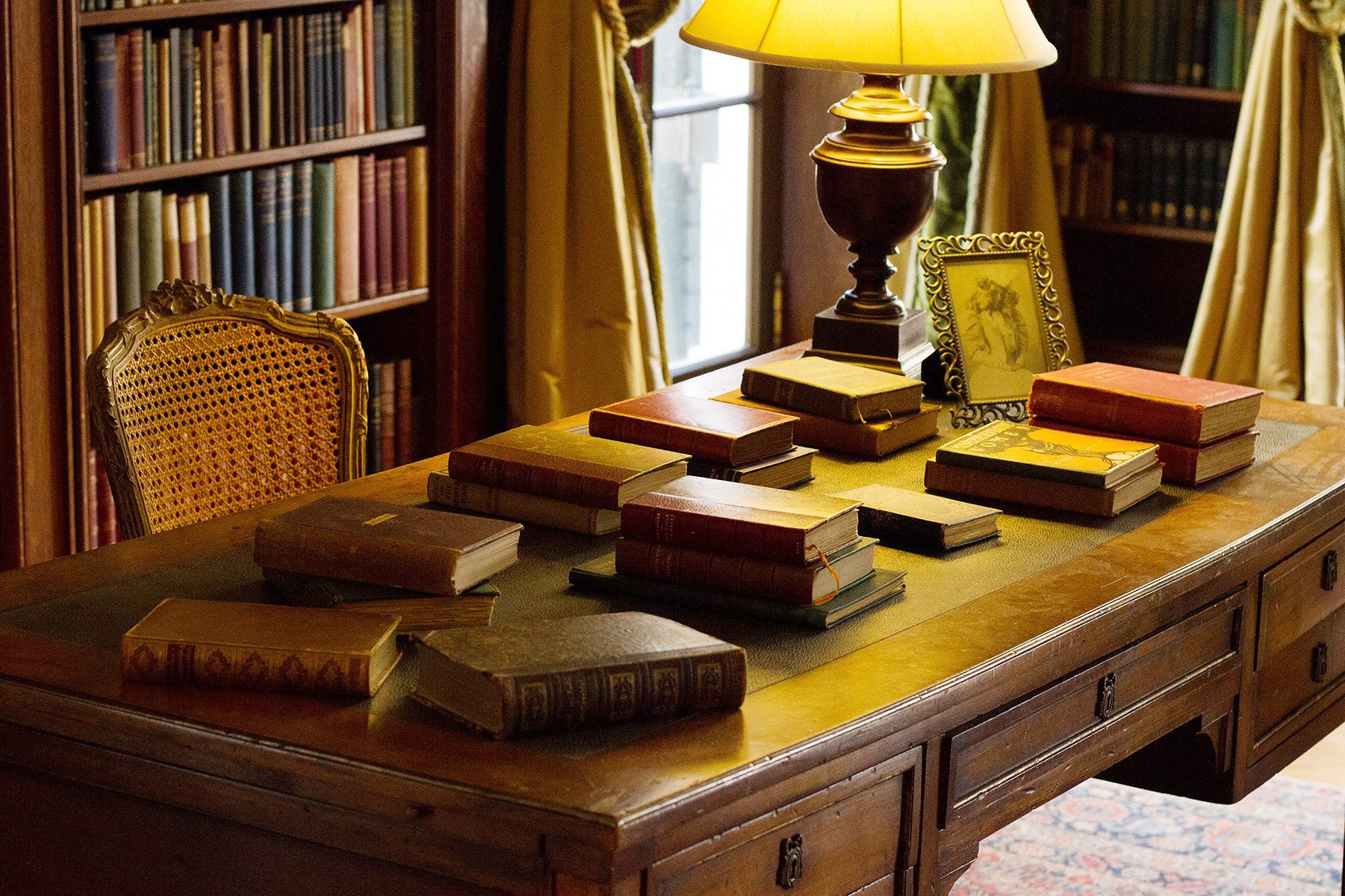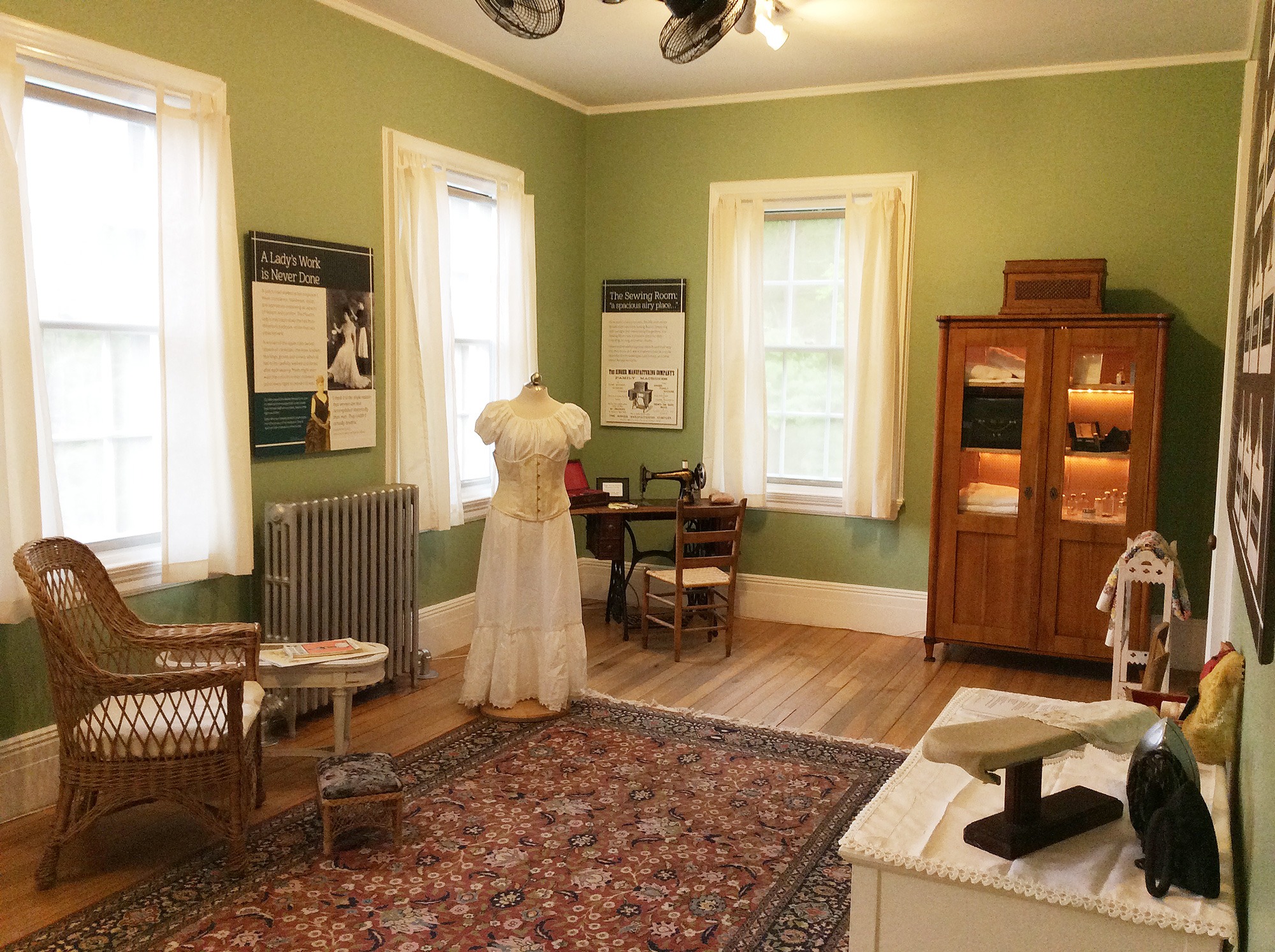“If Proportion is the good breeding of architecture, symmetry, or the answering of one part to another, may be defined as the sanity of decoration.”
The design of the Main House combined Edith Wharton’s philosophies and astute knowledge of design and architecture, with the professional expertise of her architects Ogden Codman, Jr., and Francis L.V. Hoppin. The exterior of the mansion, completed by Hoppin, was based on Belton House, a 17th-century English country house in Lincolnshire. The expansive terrace, on the east façade, was an Italian-inspired enhancement requested by Wharton.
The Mount’s interior, designed by Wharton and Codman, is informed by classic Italian and French influences, and based on principles expressed in their book, The Decoration of Houses (1897). The fundamental premise of that influential work is that interior decoration cannot exist independent of structure; that “architectural features …are part of the organism of every house, inside as well as out.”

With Ogden Codman, she considered every detail of proportion, symmetry, and functionality in all of the rooms of the house. Rejecting the excesses of late 19th-century design, Wharton and Codman led the way to a new American aesthetic.
“Before beginning to decorate a room it is essential to consider for what purpose the room is to be used…”
Edith Wharton’s Library
“The core of my life was under my roof, among my books and my intimate friends.”
The books on the shelves of the library are from Wharton’s own personal collection, purchased by Edith Wharton Restoration in 2005. The collection contains books from every period of Wharton’s life, written in English, French, German, and Italian. Included are a significant number of Wharton’s own works, many with corrections penciled in. There are books written by friends, many containing personal inscriptions.
The range of subjects attests to Wharton’s wide-ranging curiosity. In addition to literature, gardening, and travel, there are numerous volumes on history, philosophy, religion, and science. Wharton often annotated her books – gently marking in pencil using ticks, check marks, underlining, and, very occasionally, words. In some books that are heavily marked, it seems almost as if one is following Wharton’s thoughts as she reads.
The collection has proven an invaluable tool in deepening our understanding of Wharton. Her personality springs from the pages of her beloved texts, and offers a new trove of information for the next generation of scholars, and storytellers.
Interesting in learning more? Take a private tour for a rare and wonderful glimpse into what Wharton was thinking, and feeling, over 100 years ago. For more information, e-mail Nynke Dorhout.
Wharton scholar Sheila Liming has also digitized much of Wharton’s library. To view her project, click here.

Service Wing
“Several of our servants have been with us for so long that I know to the full the strength of feeling one has about such irreplaceable friends.”
The domestic servants worked primarily in the south wing of the house. On the bedroom floor, rooms included a sewing room and adjacent closet for Wharton’s dresses, a linen closet, and a room for her personal maid. The butler’s pantry, brush room for cleaning shoes and outdoor wear, and offices for household management were on the main floor. The ground floor housed the kitchen, a scullery for washing pots and pans, the servants’ dining room, and the laundry room (now The Mount bookstore).
Many of Wharton’s servants served her for decades, others were new immigrants. The recreated working rooms at The Mount give a glimpse into the stories of their lives.

